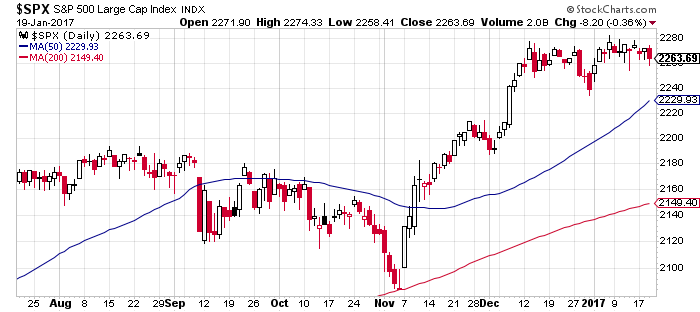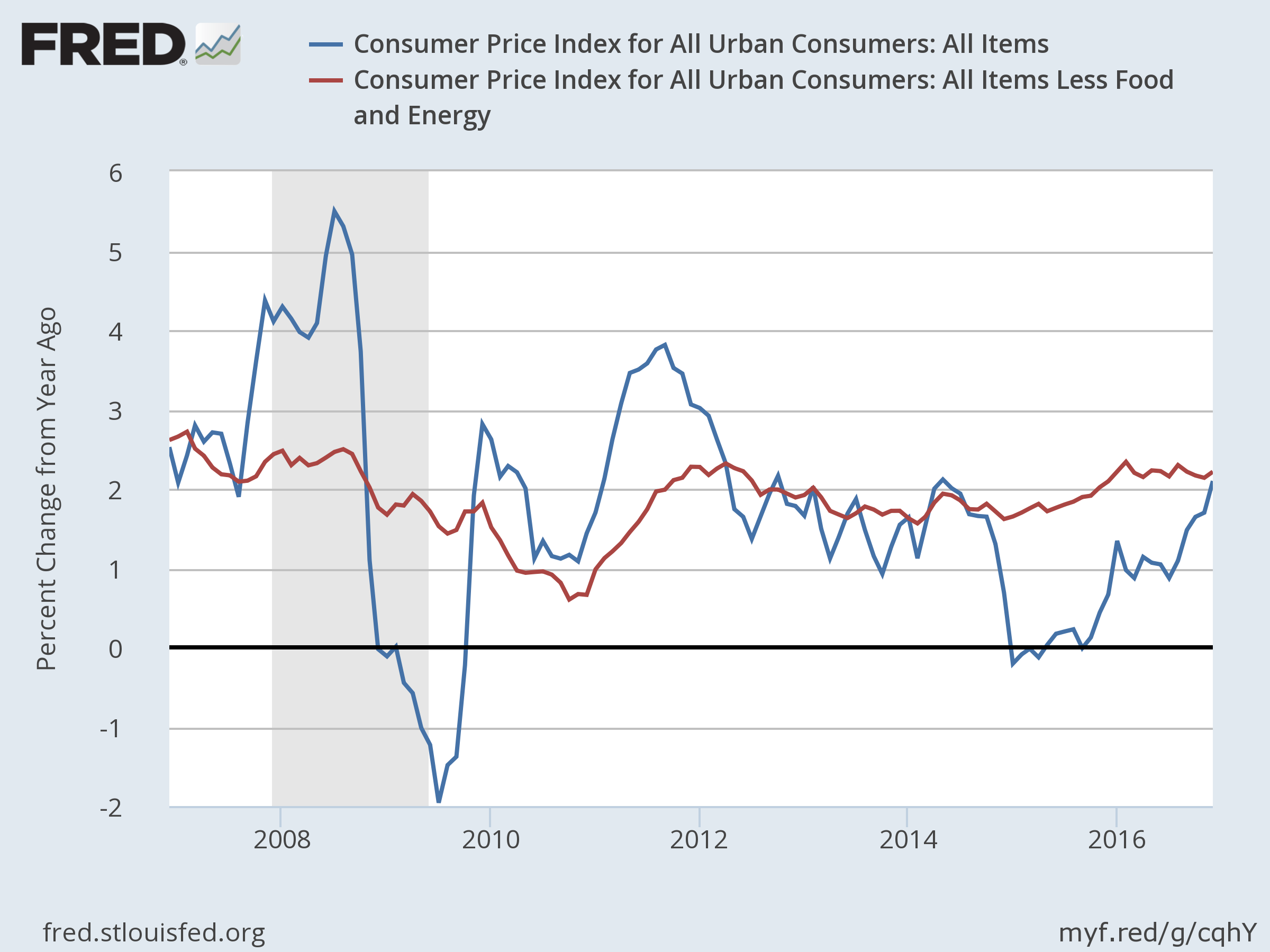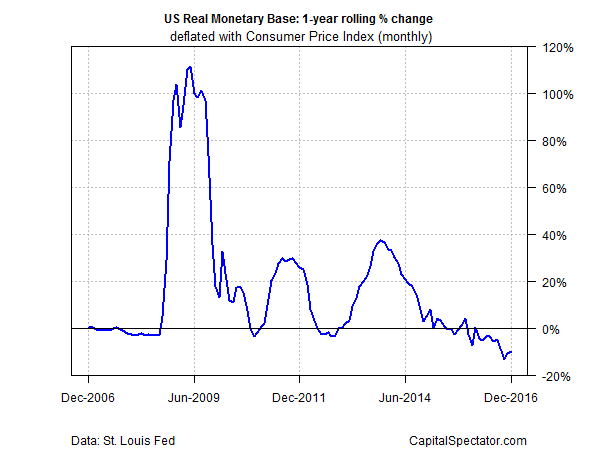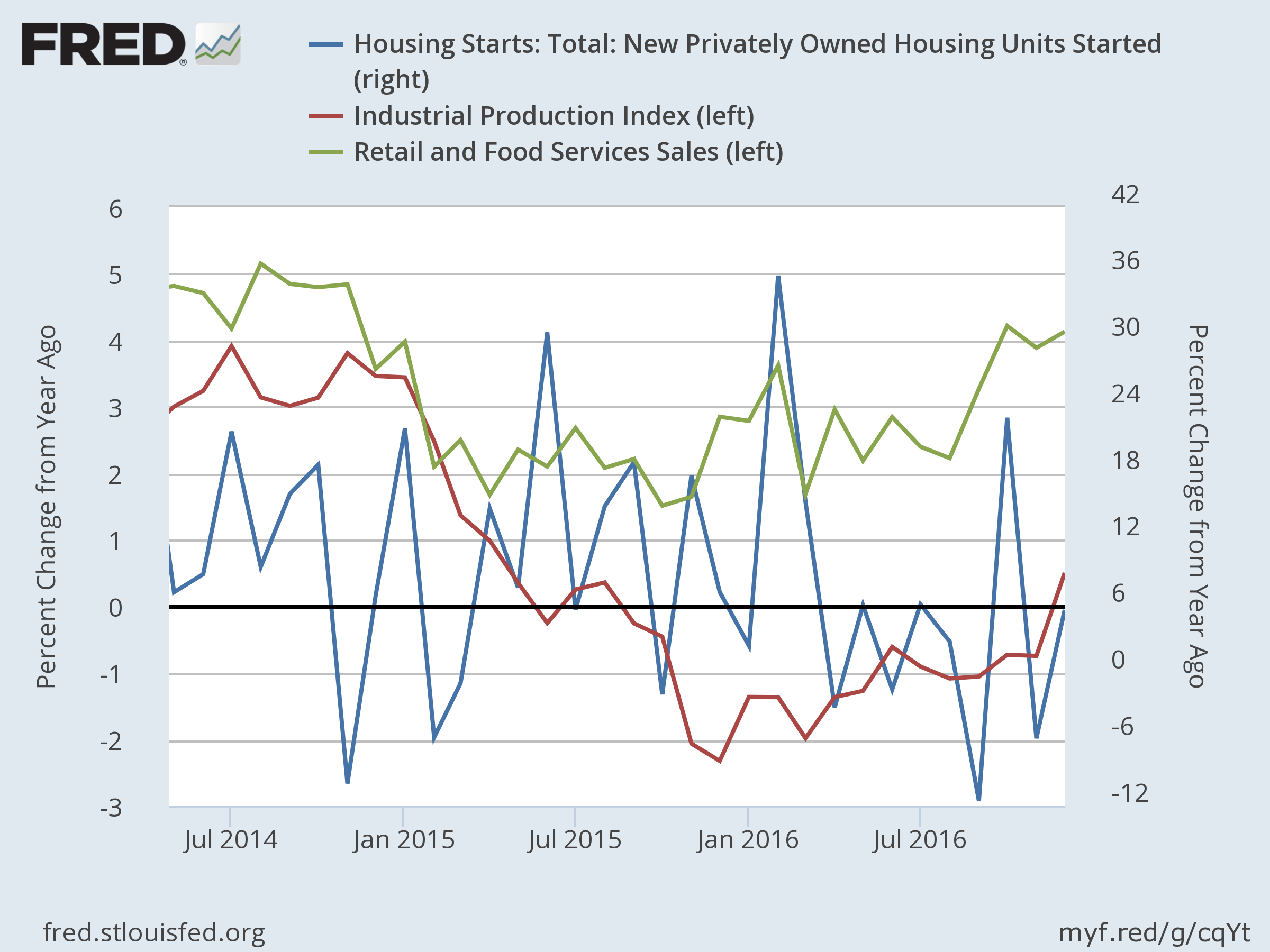Moderate US Growth Prevails At Dawn Of Trump Era
Donald Trump is set to become the 45th President of the United States today at 12 noon Eastern and he will inherit an economy that’s expanding at a moderate pace, based on available data published to date. Optimists argue that the new administration’s policies will boost the growth rate, but there’s also plenty of skepticism in other quarters about what to expect, in part because of concerns that Trump’s economic plans could start a trade war. The one thing that everyone can (or should) agree on at the moment is that the world’s biggest economy ended 2016 on a relatively high note, according to a range of indicators. There are still many problems facing the country from an economic perspective, but for the moment there’s a respectable tail wind blowing.
As the nation awaits the inauguration of a new President, let’s briefly summarize the key points in the US macro profile as it currently stands.
Recession risk is low. A range of sources show that the probability remains low that an NBER-defined recession has recently started or is near. That’s the message in The Capital Spectator’s business cycle indexes and in two benchmarks published by Federal Reserve banks via the Philly Fed ADS Index and the 3-month average of the Chicago Fed National Activity Index.
Moderate growth is expected for the upcoming Q4 GDP report. The Atlanta Fed’s GDPNow model is estimating (as of Jan. 19) that output grew 2.8% in the fourth quarter, moderately below the 3.5% pace in Q3. Meanwhile, the New York Fed’s Q4 estimate is lower, projecting a relatively sluggish 1.9% increase (as of Jan. 13). Private-sector economists are looking for a slightly firmer gain. The Wall Street Journal’s survey of economists for this month reflects an average forecast of 2.1% growth for the preliminary Q4 GDP report that’s due later this month.
Employment growth is intact, but the trend is slowing. Unemployment was just 4.7% in December, which is close to the lowest level since the recession ended. But the growth trend in payrolls is decelerating, which could present a challenge for the Trump administration this year.
The US stock market is holding steady after rallying in the wake of Trump’s election. The S&P 500 is up nearly 6% since Election Day, although equities have been more or less flat so far this year. The initial exuberance surrounding the new administration’s policy plans has cooled in recent weeks, presumably because the crowd has adopted a wait-and-see attitude as the levers of power in Washington change hands.

Treasury yields are up since Election Day. The benchmark 10-year Treasury is currently trading at 2.47% (as of Jan. 19, based on daily data via Treasury.gov). That’s up from 1.90% on Election Day and close to the highest level in two years.

Inflation is picking up. Consumer price inflation at the headline level in December increased at the highest annual pace in nearly two years. Core CPI, which is considered a more reliable measure of pricing trends, is even higher, running at 2.2% for the year through last month. The Cleveland Fed’s current projection for headline CPI’s annual rate in this year’s first quarter sees the pace accelerating to 2.5%.
(Click on image to enlarge)

Monetary policy continues to tighten. The Federal Reserve has raised interest rates two times in the last 13 months and it’s widely expected that more hikes are in the cards for 2017, based on comments this week by Fed Chair Janet Yellen. Meanwhile, the Fed continues to squeeze the real (inflation-adjusted) base money supply, which implies that monetary tightening remains underway and ongoing. The M0 measure of money fell 9.9% in December vs. the year-earlier level—the tenth straight month of year-over-year declines.

Recent data updates looks encouraging. The December reports on retail sales, industrial production and housing starts paint a moderately encouraging profile via the year-over-year comparisons. Notably, industrial output’s annual change returned to positive territory last month for the first time in more than a year. Meanwhile, the annual trend in retail sales inched higher, close to the highest rate in nearly two years. Housing starts perked up in December too, rising 5.7% in annual terms after dipping 5.9% in November vs. the year-earlier level.
(Click on image to enlarge)

The question now, at the dawn of a new era in Washington and perhaps for the world, is whether the economic prescriptions that Trump has in mind are the right medicine for the US economy at this point in the recovery from the Great Recession.
“When you think of what Trump is inheriting, it is an economy in which much of the recent crisis has been solved,” observes Jed Kolko, chief economist for indeed.com, a web site that publishes job openings. “The challenges that remain are the ones that are harder to fix,” he told Reuters.
Difficult or not, those challenges (and any successes) will be under new management in a few hours.
Disclosure: None.



